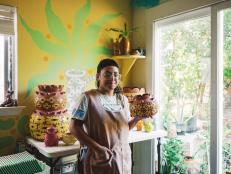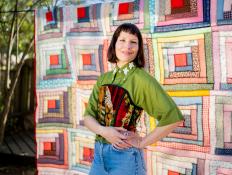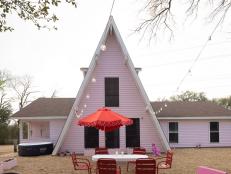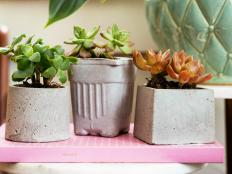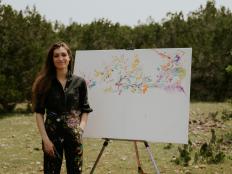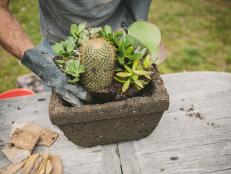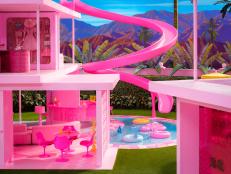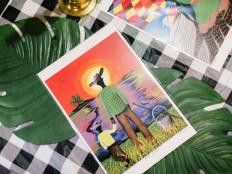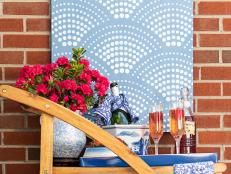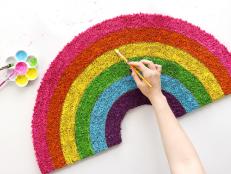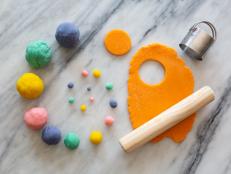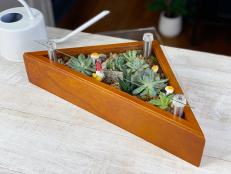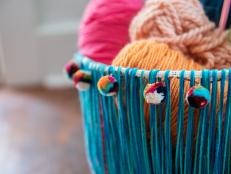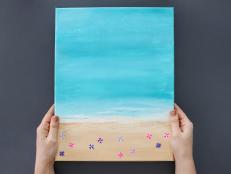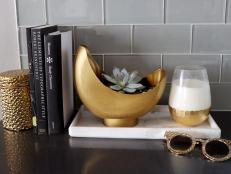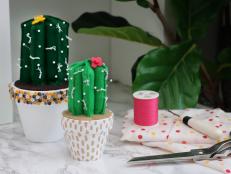This Artist With Synesthesia Painted the Sounds of Wildlife During the Solar Eclipse
Sound-to-color synesthetic painter Sarah Kraning took to canvas to document the shifting sounds of wildlife during the total solar eclipse. Learn more about the cosmic phenomenon-inspired piece and how you can secure a limited-edition print for your home.

Arnelle Lozada

On Monday, April 8, during a Texas afternoon of characteristically unpredictable weather, nature unveiled one of its most mesmerizing spectacles — a total solar eclipse where the moon delicately moved between the Earth and the sun, casting a shadow that briefly turned day into an ethereal twilight.
Texas residents and visitors alike were among those fortunate enough to be in the path of totality — a narrow band where the sun is perceivably completely obscured by the moon — and were treated to a front-row seat for this year’s awe-inspiring celestial dance. The time of totality varied depending on location, but for many, it lasted somewhere between a breathtaking three to four minutes, allowing ample time to witness the sun's corona — a radiant halo of light that is normally invisible to the naked eye.
Millions of people gathered across North America to witness the cosmic phenomenon, setting up telescopes, cameras and makeshift viewing stations to capture the moment. But in Florence, Texas, abstract artist Sarah Kraning had a different approach.

Arnelle Lozada
As a painter with sound-to-color synesthesia — a perceptual phenomenon where individuals see colors in response to hearing sounds — she grabbed her paintbrushes and set up her easel and canvas in the middle of a wild clearing on a ranch and tuned into the shifting sounds of wildlife.

Arnelle Lozada
“Sound is an all-consuming sensory experience for me. Every sound has a color, texture, movement and form. I’m overwhelmed on a daily basis by the beauty of the sounds of the world around me and have a deep desire to share these experiences with others,” said Sarah. “I wanted to take this moment, when humanity was standing in awe of this typically unseen celestial event, to celebrate the hidden worlds of nature’s soundscapes and the connection between all of life,” she continued.

Arnelle Lozada
During a solar eclipse, the sudden change in light can have intriguing effects on wildlife, and researchers have observed interesting behavioral shifts. As the sky darkens and the temperature drops, diurnal animals, such as birds and squirrels that are mainly active during the day, may become confused, thinking that night is approaching. Some birds may cease singing, while others may start their evening calls. Nocturnal animals, on the other hand, might become more active, thinking that it's time to start their nightly routines. During a total solar eclipse in 2017, scientists noticed bees returning to their hive and birds heading back to their nests — both behaviors typically seen at dusk. Bats have been seen emerging in search of food during eclipses, and orb-weaving spiders have been witnessed dismantling their webs only to rebuild them moments later when the sun returns.

Arnelle Lozada
At the start of the eclipse on the ranch, the sounds of surrounding nature were just like any other afternoon in April — the rustle of leaves as the breeze moved through them, the distant crackle of branches beneath the hooves of passing longhorns and gentle bird calls that filled the air with music and melody. And so the process began.
Painting linear from left to right, Sarah started by representing the movement of these typical springtime sounds with fluid ribbon textures reminiscent of calm sound waves.

Arnelle Lozada
As the eclipse progressed, she moved across the canvas, marking the shifts in patterns of sound with subtle handwritten timestamps. Bird songs grew frantic and high-pitched but their warbling decreased, and the sounds of little critters scurrying across the ground proliferated until eventual totality, when all fell silent in the darkness apart from a few isolated bird calls and the rhythmic chirp of crickets and other insects.

Arnelle Lozada

Arnelle Lozada
Once totality was over and the sun began to re-emerge, there was an explosion of sound and variation in volume, which for Sarah, meant an explosion of color and movement. There was a familiar joy in the bird songs that returned as the sun peeked through, and she captured the fluctuations in their warbles through the upward and outward swaths of color on the right side of the canvas.
For Sarah, this practice of reconnecting with nature during a special moment in time wasn’t just about paying tribute to the beauty of the nature that surrounds us, it was also about using her art to help conserve it.
“I was honored to partner with Re:wild on this project, an incredible organization committed to protecting and restoring the wild around us,” Sarah says. “With their work, they are helping many people to see the beauty of our natural world that often goes unseen, as well as to draw attention to what needs to be done to protect it. It seemed like the perfect time to combine our efforts to show and celebrate the hidden beauty of our planet.”
Through this partnership, 1,000 prints of the eclipse piece are available to Re:wild supporters who make a donation of $125 or more. The first 50 prints will be signed and numbered, and include a handwritten note.

Arnelle Lozada
It’s not every day you get to see the sounds of wildlife during a total solar eclipse visualized by a synesthete who has dedicated her gift to translating the beauty of sound onto canvas and bridging the visual and auditory worlds. Although music is typically at the core of Sarah’s art — where she collaborates with musicians and paints alongside them as they play — in this case, it was the symphony of wildlife that inspired each brush stroke. This piece is a reminder that we live in a world of unfathomable beauty that needs to be protected, and we don’t have to be environmental conservationists to do our part. We can all contribute in one way or another.

Arnelle Lozada
“I’m hoping that people who view the artwork will feel gratitude for the multifaceted beauty of our natural world and an urgency to protect and restore it.” says Sarah.

Arnelle Lozada
Sarah’s work and story have been featured by the Guggenheim Museum Mazagine, TEDx Talks, Wired Magazine, the Official Beatles Museum in Liverpool and the Synesthesia Tree. You can follow her at @sarahkraning and learn more about her at sarahkraning.com.






